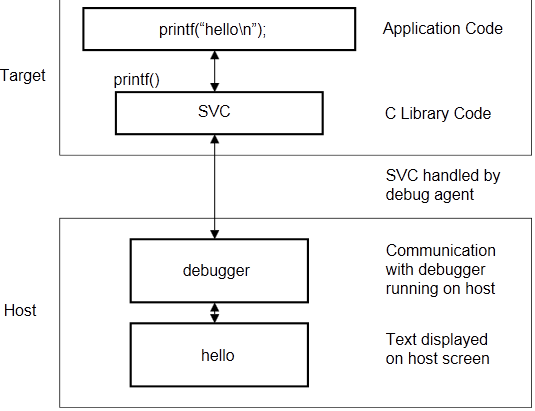Semihosting is a mechanism that enables code running on an ARM target to communicate and use the Input/Output facilities on a host computer that is running a debugger.
Examples of these facilities include keyboard input, screen output, and disk I/O. For example, you can use this mechanism to enable functions in the C library, such as printf() and scanf(), to use the screen and keyboard of the host instead of having a screen and keyboard on the target system.
This is useful because development hardware often does not have all the input and output facilities of the final system. Semihosting enables the host computer to provide these facilities.
Semihosting is implemented by a set of defined software instructions, for example, SVCs, that generate exceptions from program control. The application invokes the appropriate semihosting call and the debug agent then handles the exception. The debug agent provides the required communication with the host.
The semihosting interface is common across all debug agents provided by ARM. Semihosted operations work when you are debugging applications on your development platform, as shown in the following figure:

In many cases, semihosting is invoked by code within library functions. The application can also invoke the semihosting operation directly.
Note
ARM processors prior to ARMv7 use the SVC instructions, formerly known as SWI instructions, to make semihosting calls. However, if you are compiling for an ARMv6-M or ARMv7-M, for example a Cortex-M1 or Cortex-M3 processor, semihosting is implemented using the BKPT instruction.
Concepts
Using ARM C and C++ Libraries and Floating Point Support:
Reference
![]() 粤公网安备44030002003510号 )
粤公网安备44030002003510号 )